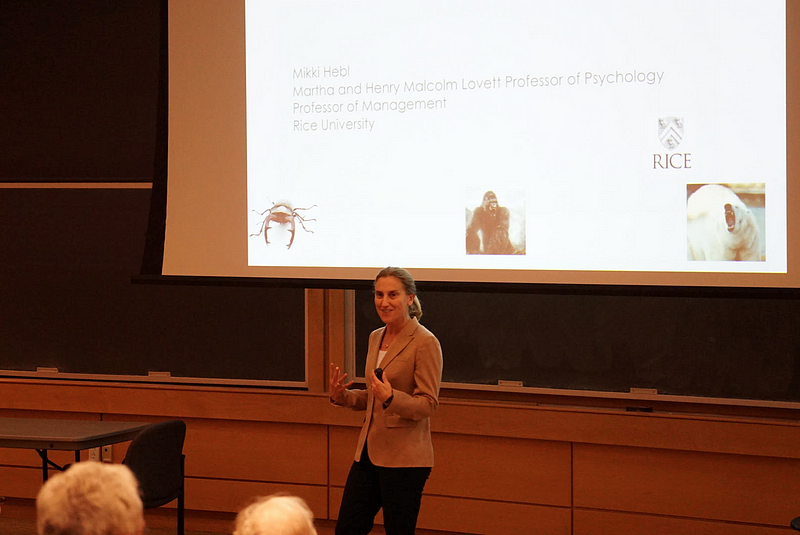
On Wednesday evening, Dr. Mikki Hebl from Rice University in Houston, Texas visited Hamilton College to give a lecture on discrimination entitled, “Mind Bugs and Gorillas and White Bears, Oh My!” The lecture dealt with issues such as discrimination, stereotypes and biases, and how people can modify their behavior to avoid falling back on those practices. Hebl used many interactive demonstrations to clarify her claims and show how prevalent these issues truly are.
Hebl is an applied psychologist who specializes in social psychology relating to industries and organizations. She focuses on workplace discrimination against individuals who are part of stigmatized groups including women and ethnic minorities.
She has received the Rice University Women’s Resource Center Impact Award twice for her commitment to research on gender.
Hebl began her discussion by asserting that there are two types of discriminations that exist in the world, the first being historic discrimination. This type of prejudice is overt, formal and incredibly explicit. Historic discrimination has decreased over time through laws and policies, but it still persists today, even more so now considering the political climate.
The second and more interesting form of discrimination Dr. Hebl later spoke about was interpersonal discrimination.
This form of discrimination is a lot more subtle and hard to detect, but is nonetheless equally if not more so pervasive than historical discrimination. Hebl has conducted a lot of research on interpersonal discrimination and explained a lot of her findings in the remaining part of her talk.
Discussion to be held as precursor to upcoming Common Ground Panel
By Emma Ritz ’20, Staff Writer
spec.hamilton.edu
The first of her studies that Hebl discussed was one she conducted with her undergraduate students. The students were asked to wear hats, but they did not know what each hat said on it; some students were given hats that said “Texan and Proud,” while the other students were asked to wear hats that said “Gay and Proud.”
The students then went to various stores to apply for a job and taped their conversations with the workers they encountered.
Hebl discovered that in these conversations, overt discrimination was not as common as interpersonal discrimination. In the conversations where interpersonal discrimination was obviously picked up on, the conversations were notably shorter, fewer words were used and a general feeling of negativity was perceived.
Hebl continued this trend of studies and conducted similar ones with obese people, pregnant women, Muslims and women in general. In these studies, she and her students noted that if women were awarded a job, they were given easier tasks that were not as cognitively draining, compared to their male counterparts.
In remembrance of the life of Isaiah Carpenter-Winch ’19
By Madeleine Maher ’18 & Charles Dunst ’18, Editors-in-Chief
spec.hamilton.edu
The talk concluded with a demonstration that included six volunteers from the audience.
The students were asked to leave the room, with only one student asked to return shortly after. This student then read an extensive story about a boy, which they then had to recount to the next student, forming a pseudo game of telephone.
The last three students followed the same procedure, but with a girl subject instead of a boy. Dr. Hebl discovered that when the students were asked to recall specifics from the story, they mostly remembered the stereotypical aspects of the story that pertained to the subject’s gender (“the boy then played violent video games,” “the girl then went shopping and took a bath”).
Overall, Hebl produced a talk that was both incredibly informative and reflective, as well as comforting. She created a safe space where the audience could speak and reflect on stereotypes and discrimination, with the hopes of learning how to better deal with issues.

















